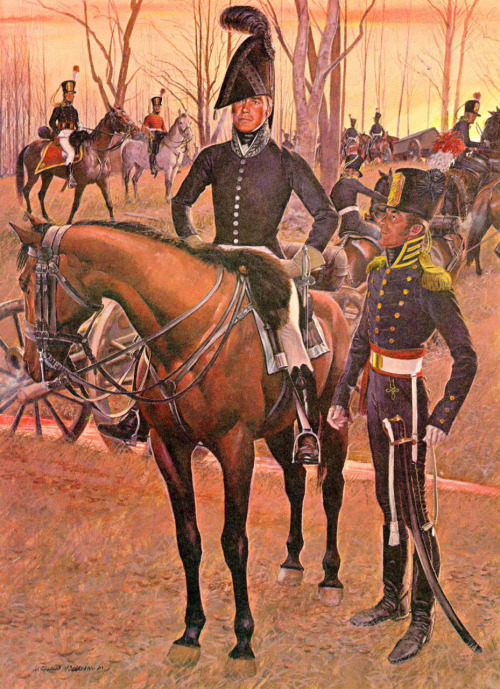In the summer of 1813, after successfully fending off two British sieges in May and July, respectively, the American army at Fort Meigs led by Maj. General William Henry Harrison was poised to go on the offensive. Eastwards, at Erie, Pennsylvania, Master Commandant Oliver Hazard Perry's squadron of gun brigs, schooners, and sloops was preparing to challenge Captain Barclay's Royal Navy flotilla for control of Lake Erie. In the 1870s, the Western Reserve Historical Society (I like their slogan: "History: Take it personally!") began to publish transcriptions of the letters of Harrison's regular officers. Thanks to Google Books, I've been able to use these letters for my research. As they usually deal with prosaic details, the letters are a great insight into the day to day life of an army in the field during the War of 1812.
Note: the 17th and 19th United States Infantry Regiments were raised in Kentucky and Ohio, respectively, in the Summer of 1812. They served as Harrison's main force of regular infantry until supplemented by the newly raised 24th, 26th, and 27th Regiments in 1813. Several companies of the 17th and one of the 19th fought and surrendered at the River Raisin: between that battle and the lack of winter clothing and supplies, the two regiments were whittled down significantly. Nevertheless, both participated in the sortie at Fort Meigs on May 5th 1813, earning distinction for the Regular Army in a charge led by Colonel John Miller and Major George Tod. In 1815 the remnant of the two regiments was consolidated with the 3rd, 5th, and 28th Regiments to form a new 3rd United States Infantry Regiment, today known as "the Old Guard". Since so many regular army units were reorganized during or after the War of 1812, it can be difficult to find information on the older formations.
Captain Wilson Elliott, 19th Regt. US Infantry, wrote a letter to Major Tod complaining about political favoritism in officer appointments as well as an update on the state of the regiment, then stationed at Fort Meigs.
Later in the summer, Captain Elliott wrote another letter, describing a violent illness which he survived, drilling recruits, and new orders from General William Henry Harrison to demolish part of Fort Meigs in order to make it defensible by fewer troops. By the end of the summer Fort Meigs was reduced to a fraction of its original size: this second fort was burned shortly after the war by settlers in the Maumee Valley.
Colonel Miller found himself in charge of a skeleton regiment by the summer of 1813. New recruits and clothing for his existing men were both hard to come by. Officers and men belonging to different regiments were scattered throughout the 8th Military District (composing Ohio, Indiana, and Kentucky).
Calvin Pease wrote a letter explaining the intricacies of setting up regular mail service to the Northwest Army:

No comments:
Post a Comment
Note: Only a member of this blog may post a comment.